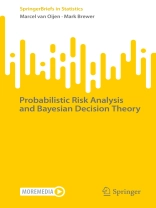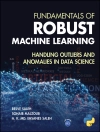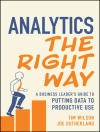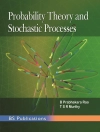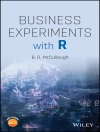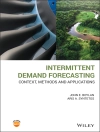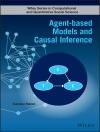The book shows how risk, defined as the statistical expectation of loss, can be formally decomposed as the product of two terms: hazard probability and system vulnerability. This requires a specific definition of vulnerability that replaces the many fuzzy definitions abounding in the literature. The approach is expanded to more complex risk analysis with three components rather than two, and with various definitions of hazard. Equations are derived to quantify the uncertainty of each risk component and show how the approach relates to Bayesian decision theory. Intended for statisticians, environmental scientists and risk analysts interested in the theory and application of risk analysis, this book provides precise definitions, new theory, and many examples with full computer code. The approach is based on straightforward use of probability theory which brings rigour and clarity. Only a moderate knowledge and understanding of probability theory is expected from the reader.
Зміст
– 1. Introduction to Probabilistic Risk Analysis (PRA). – 2. Distribution-Based Single-Threshold PRA. – 3. Sampling-Based Single-Threshold PRA. – 4. Sampling-Based Single-Threshold PRA: Uncertainty Quantification (UQ). – 5. Density Estimation to Move from Sampling- to Distribution-Based PRA. – 6. Copulas for Distribution-Based PRA. – 7. Bayesian Model-Based PRA. – 8. Sampling-Based Multi-Threshold PRA: Gaussian Linear Example. – 9. Distribution-Based Continuous PRA: Gaussian Linear Example. – 10. Categorical PRA with Other Splits than for Threshold-Levels: Spatio-Temporal Example. – 11. Three-Component PRA. – 12. Introduction to Bayesian Decision Theory (BDT). – 13. Implementation of BDT Using Bayesian Networks. – 14. A Spatial Example: Forestry in Scotland. – 15. Spatial BDT Using Model and Emulator. – 16. Linkages Between PRA and BDT. – 17. PRA vs. BDT in the Spatial Example. – 18. Three-Component PRA in the Spatial Example. – 19. Discussion.
Про автора
Marcel van Oijen studied mathematical biology at the University of Utrecht, graduating cum laude in 1985. He completed his Ph D in plant disease epidemiology at Wageningen University, where he then worked on modelling the impacts of environmental change on crops. In 1999, he moved to Edinburgh where he was a senior scientist for the UK’s Natural Environment Research Council, focusing on the use of Bayesian methods in the modelling of ecosystem services provided by grasslands, forests and agroforestry systems. He is now an independent researcher and this is his second book, following the publication in 2020 of ‘Bayesian Compendium’, an introductory guide to the universality of Bayesian methods.
Mark Brewer is director of Bio SS (Biomathematics and Statistics Scotland). His first degree was in Probability and Statistics from the University of Sheffield, and Mark subsequently studied for a Ph D in statistics – specialising in MCMC and graphical models – at the University of Edinburgh. After three years working in statistical consultancy at the University of Aberdeen and five years as a lecturer in statistics at the University of Exeter, in 2001 Mark moved to Bio SS as a senior statistician. He has worked mainly in ecological and environmental applications, conducting research in spatio-temporal and Bayesian modelling. He became head of Bio SS in 2018, and has seen the organisation increase both its funding and staffing complement since that time. Mark acted as co-Editor for Biometrics (2019-2021) and was previously on the Executive Board of the International Biometric Society (2017-2020).
